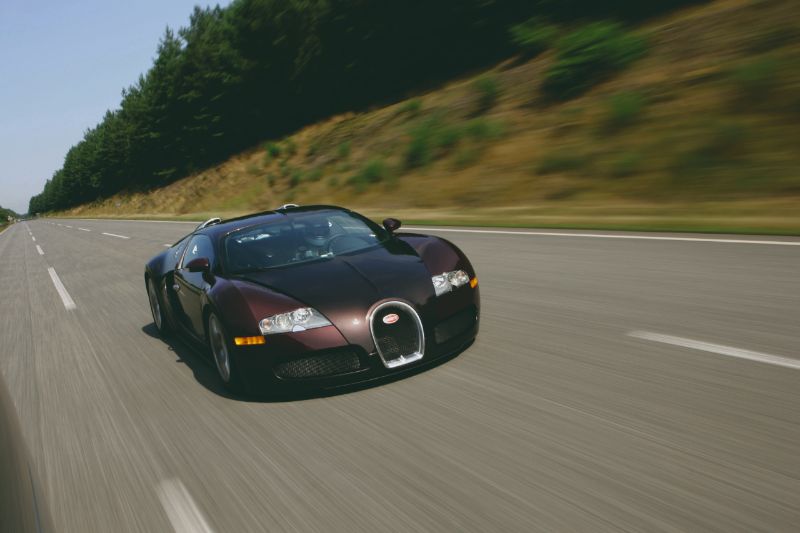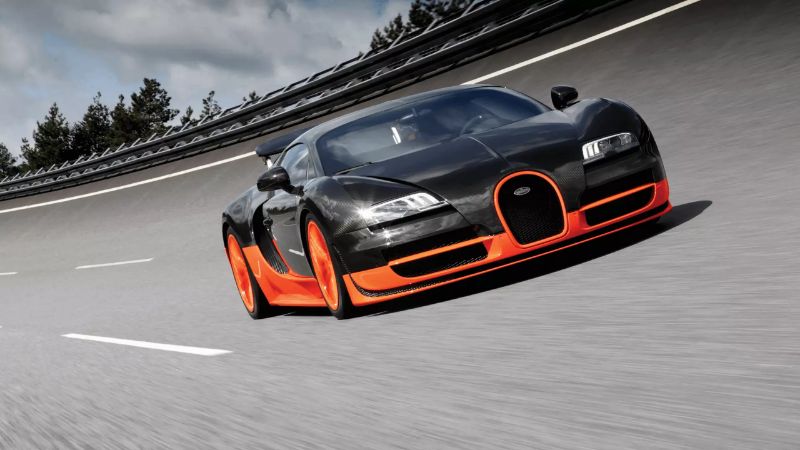Bugatti Veyron

Developed and designed in Germany with the Volkswagen Group behind it, this powerful sports vehicle is manufactured by Bugatti, a French company based in Molsheim. Top Gear named it the Car of the Decade for 2000-2009. Top Gear also named it the Best Car Driven All Year Award for 2005.
The Guinness Book of World Records recognized the Super Sport Version of the Veyron as the fastest production car that was street legal. The right to use the Bugatti logo and name was acquired by Volkswagen in 1998. This led to a series of concept cars being quickly introduced which culminated in the Bugatti Veyron 16.4. Later, the W18 engine designed by Volkswagen powered the now permanent four-wheel-drive sports car.

The 1998 Paris Motor Show boasted the 2-door coupe while the Geneva Motor Show in 1999 boasted the 4-door saloon. Finally, the 18/3 Chiron was presented in 1999 at the International Motor Show.
From 2005 to 2011 there were some features you could expect to see with the Bugatti Veyron. This included the W16 cylinder engine, 8.0- liter and quad-turbocharged, making for power equivalent to that of two V8 engines, narrow-angle and bolted together. There was a total of 64 valves spread across the cylinders. This allows for a unique configuration with the camshafts driving in two banks, making only four needed in total. There are seven gear ratios run by the computer-controlled transmission, providing a shift time less than 150 milliseconds.
These cars use Michelin PAX run-flat tires, which were designed for their top speeds. During these years, you could find a total of ten radiators with the Bugatti Veyron. The engine generated about 922 lb-ft of torque and 987 hp, giving it the ability to reach up to 253.81 mph in 2005. In order to reach these speeds today, there is a special toggle on the driver’s seat that initiates a checklist that both the car and driver must pass while at rest. Without doing so, you cannot access those highest speeds in motion.

Braking is important in a vehicle that can reach top speeds, and the Bugatti is no different. The braking system has carbon-fiber-reinforced silicon-carbide discs that are radially-vented and cross-drilled. They don’t fade as quickly and are lighter than standard iron discs. There are eight titanium pistons in the front and six in the rear, with ABS as an added safety in the event there is a brake failure.
Current models of Bugatti Veyron’s have brought about safety reinforcements in the windshield, roof, and running lights. There are also models with removable tops. These only reach top speeds with the hard roof attached and are limited to 81 mph with the soft roof in place.
